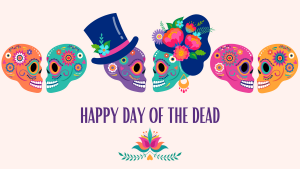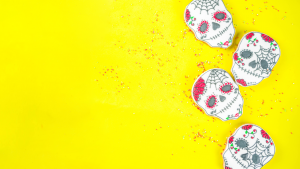
30 Oct Why do we decorate pumpkins on Halloween?
The world-famous and celebrated Halloween party is approaching, as it is known in the Anglo-Saxon world, and which takes place on October 31. But what exactly are we celebrating? In this post we are going to try to explain the different customs that have been adopted according to the country in which we are.
A party that crosses borders
That’s how it is, this party is celebrated on several continents. The word Halloween (the contraction of All Hallows’ evening) has its origin in the Celtic pagan festival of Samhein, where the end of the harvest season was celebrated and ushered in the beginning of the dark season and the beginning of the « Celtic New Year “. It is celebrated in Anglo-Saxon countries such as Canada, the United States, Ireland and United Kingdom.
In Latin America, especially in Mexico, it is known as “Day of the Dead” and is celebrated on November 1 and 2. The origin of this celebration dates back to the customs of the Aztec culture, combined with the Spanish Catholic influence. In 2008 UNESCO declared the festival as Mexico’s Intangible Cultural Heritage of Humanity and it has also been the inspiration for the Pixar animated film, Coco.
In the Catholic countries of Europe, this celebration is known as “All Saints Day” and is celebrated on November 1.
The pumpkin, jack-o’-lantern and the skull
If there is something that characterizes this party, it is the very particular decoration that accompanies it. And not only homes are decorated, but also shops. One of the main elements of the Anglo-Saxon world is the illuminated pumpkin on which evil faces are carved. The origin of this tradition is due to the legend of a certain Jack who made a pact with the devil. Apparently, at first, lanterns began to be created in other types of vegetables such as turnips and beets.
In Mexico, instead of pumpkins, we find skulls. Figures decorated with many colours and with folk costumes. Some of the best known is the skull known as La Catrina, originally called La Calavera Garbancera, named after the muralist Diego Rivera, Frida Kahlo’s husband.
In addition, skulls are also literary figures. It is a satire in which the subject of death is approached with a humorous tone. It is written in verses and as an epitaph.

The sweet always accompanies
Gastronomy is a key part of any celebration and in this case, it is characterized by the sweet touch.
The Anglo-Saxon custom “trick or treating” is well known in which children go to ask for sweets from their entire neighbourhood. In Mexico we continue with the skulls, but this time, made of sugar: There are chocolate, marzipan, amaranth and the most famous: alfeñique.
In any case, the goal is always the same: celebrate together and enjoy life while we’re alive! Happy Halloween!

